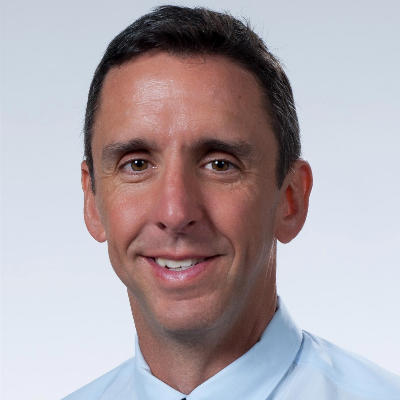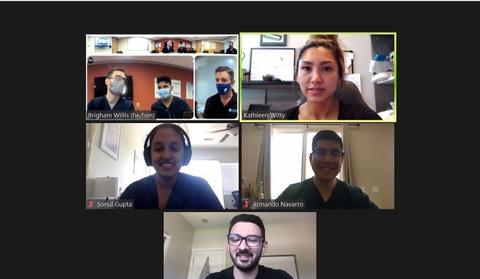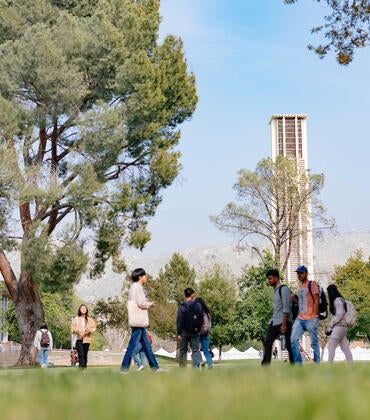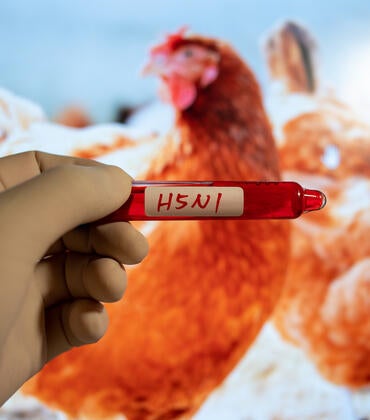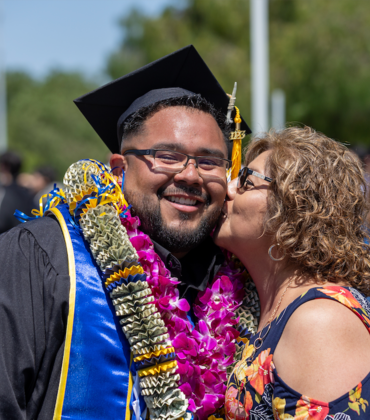Some students and faculty at UC Riverside, fearful about returning to campus this fall, are wondering if in-person classes will be safe — fearing a COVID-19 outbreak. These fears are challenged by no documented COVID-19 transmission among students in the UCR School of Medicine, where classes began in early August with nearly 100% attendance.
“The what-ifs and worst-case scenarios simply never happened,” said Dr. Brigham Willis, the senior associate dean of medical education at the School of Medicine. “We have been engaged in some in-person activity probably since May of last year; so, in a sense, we have had in-person classes for more than a year now.”
Willis said good vaccination compliance has helped ensure overall low COVID-19 positivity rates in the medical school.
“What has helped us tremendously is our high vaccination rates among our students and employees,” Willis said. “If you have high rates and you follow recommended procedures for masking and cleaning of rooms, the risk is extremely low.”
Third- and fourth-year students in the medical school have almost 100% vaccination rates, with only a handful of first- and second-year students unvaccinated. Vaccination rates are very high with the staff and teaching faculty as well.
Willis said regular classrooms cleaning and handwashing have also helped keep COVID-19 at bay. He said the school has been conscientious about the daily wellness survey that all employees and students visiting campus must complete.
“Our students have been diligently completing these surveys every day,” Willis said. “We have a response team ready to attend to students who have tested positive for the virus. This team helps quarantine these students and notifies people they have interacted with. We strictly follow campus guidelines for closing and cleaning classrooms where we know infected people were in attendance. In general, this is a safe model for doing in-person instruction.”
Typically, the first- and second-year classes in the medical school have 80-90 students. Small-group classes have 4-20 students. Last year, before vaccines and when not much was known about COVID-19, the school was extra cautious. It had much smaller cohorts of students, enforced at least 6 feet of physical distancing between people, permitted smaller number of people per room at any time, and required face coverings for all in-person gatherings and activities. Although today vaccines are readily available and nearly all employees and students in the medical school are vaccinated, the mask mandate has continued for all in-person indoor group activities due to the Delta variant.
Willis believes many activities in the School of Medicine cannot effectively be done remotely.
“Physical exams and anatomy classes — all of these are impossible to do virtually,” he said. “It’s the same with clinical rotations.”
Because of that dynamic, he said the School of Medicine came up with in-person attendance plans earlier than other schools and colleges on campus. He said some classes have been “HyFlex,” a course model that allows for both in-person and virtual attendance. He said the school also livestreams classes and includes a chat feature through which students can ask questions.
“Lots of communicable diseases don’t require us not coming to work,” Willis said. “While contracting COVID-19 in the unvaccinated state is dangerous, among vaccinated individuals COVID-19 hospitalizations and fatality rates are very low — comparable, indeed, to the rates for other diseases. If you wear your mask and are vaccinated, the drawback of staying away from in-person education probably outweighs the risk of being there in person.”
For faculty, staff, and students worried about returning to campus in the fall, Willis offers some advice.
“Look at the actual data,” he said. “The risk of workplace transmission after taking precautions and vaccinations is incredibly low. We all live with risk every day. Even if you wear a seatbelt when you drive, there is a risk of dying in a car accident. That, however, does not stop us from driving.
“With COVID-19, if you are vaccinated and using masks, the risk is low enough to go ahead with in-person interaction and instruction. In the end, it’s all about risk assessment. We must ask ourselves: Do we want to be confined at home for the rest of our lives and engage with each other only virtually? The answer is decidedly no.”
